- Home
- Orson Scott Card
Galaxy's Edge Magazine Page 16
Galaxy's Edge Magazine Read online
Page 16
Immigration-driven cultural strife is growing both here and in Europe. Anti-immigration forces typically fix myopically upon their local rise, Kendall says, but the only true solution must be global. “Until masses of people stop wanting to emigrate, you still have a basic problem.” He is careful to shy away from the immigration issue, pitching his cool Cassandra tone to a lofty moral plane. His arguments seem far from the fever-eyed cries of the eco-warriors.
But Garrett Hardin, emeritus professor from UC Santa Barbara and Kendall ally, argues for an America-saving cut in immigration. Target: eventually, less than 200 million Americans, since this is the sustainable level. “Sustainable” is the consensus watchword, including some unsettling ideas.
To me the most significant one is Hardin’s opposition to sending food aid to overpopulated areas such as Somalia. “Every time we send food to save lives in the present, we are destroying lives in the future.” He invokes a cycle now well known—aid fuels birth rates, then leads to famine within a generation. Human “diebacks” are now a routine feature of worldwide news, with “compassion fatigue” already evident in the media.
Thomas Robert Malthus, the original population prophet, thought that civilization would hit the wall in the late nineteenth century. Economists like Julian Simon of the University of Maryland dismiss the doomsayers, noting that they’ve been around since the Bible. “The only difference is that Ezekiel and Jeremiah were much better writers.”
Simon and others marshal powerful counter-arguments, though they are seldom heard among the intelligensia. They remind us that mass human starvation in the modern world results mainly from outmoded political systems or war or both. Somalia is not overpopulated, as Hardin claims—it is the victim of obsolete African clan patriarchies trying to run bigger groups than their systems ever envisioned. In this view, starvation arises from human stupidity, most of it political stupidity. Only education, particularly science education, can help that. As for war, the major preventive is democracy—there hasn’t been a war between democracies for more than a century. Democratization of the world proceeds apace, driven by UN sanctions and TV advertising alike.
They feel we have a long way to go before we hit the Malthus wall. Water might prove to be the limiting factor. Flying over the western US, it’s almost entirely empty, as are a lot of other places on the planet with good climate.
That changes if you have power for desalination. For the $100 billion we’ve spent on the drug war, plus ten a year we continue to spend, we could have gone a long way toward working fusion. Or we could have developed thorium breeder fission, and maybe less exotic, cheap solar cells, if fusion turned out to have unexpected difficulties. For a small fraction of our defense budget we could still do something radical in the way of power generation, before the Ogalala aquifer runs dry in a generation or two and the bread basket becomes dust bowl.
Uplifting the bulk of humanity can suppress population growth, if well managed. It can either top out at comfortable levels, or “everywhere is Los Angeles” levels, as in the Edward Abbey quotation I opened with. It’s our choice. Refusing the third world food helps not at all, and even hurts (they grow slowly anyway from information trickle). Giving them food without technology doesn’t help either, and may even be worse.
Changing social attitudes is slow work. Much of the Catholic third world is stuck in a high growth pattern. The major problem is not religion, though. Anglo Catholics in the USA have the same fecundity as Protestants and there is no reason to think this would not also be eventually turn true south of the border. Industrialization and mechanized farming are the key ideas, since children are an economic asset rather than a liability only in low-tech agrarian economies. Luddites can’t solve the population problem.
So solutions are available, if we wise up. But voices saying this are seldom heard. Simon and his allies are in a tiny minority. The overwhelming majority of thinkers, whether economists or biologists, see disaster ahead. That 1960 paper casts a long shadow.
I suspect there is more here than a Malthusian malaise. While there are ever more mouths, there is also possible global damage unimagined by Malthus, a far more muscular feedback effect. These could tilt the entire biosphere against many species, including us. A biologist recently remarked to me, “We’ve just run out of new niches. So the whole system will do a little feedback stabilizing.” The vast, numbing menu of looming potential disasters—lessening fish stocks, water, topsoil; dwindling rain forests; growing ozone holes; dying species; global warming; deepening poverty; spreading pollution—makes the New Cassandras different.
They bring a message already deeply enshrined in the hardcore environmentalist movement, one the media have preached for decades. The issue is not the dry debate between the Simons and the Kendalls, but the sea change in moral attitudes that underlies the talk, whether it is over immigration or owls versus jobs.
To see the future, look to the fringes. The environmentalists are a powerful lobby, but they also have a wing which will, if you get in their way, spike your tree, slip sand into your backhoe’s gas tank, or sink your tuna boat.
Initially their rules—as laid down by crusty Edward Abbey in the novel which inspired Earth First, The Monkey Wrench Gang—were two. First, honor all life and do not hurt anyone. But Earth Firsters have strayed far from this rule, preparing traps for desert bikers and loggers which could have killed—but didn’t because of the vigilance of their opponents, not themselves.
Neither have they met their second rule: Don’t get caught. Many are willing to break the law and pay the price. The Arizona Five, who tried to cut an electrical tower, got nabbed by an FBI undercover agent.
Do the crime, do the time—a principled stance, but how far can it go? Are there crimes we cannot accept?
There are hundreds of monkey-wrenchers in lesser camps such as the Animal Liberation Front, the Hunt Saboteurs who disrupt big-game sport, Albion Nation, and assorted Deep Ecologists.
These are not policy people with whom libertarians can reach gentlemanly agreement about, say, junking federal timber subsidies. They all practice varying degrees of “ecotage” which estimates place at about twenty-five million a year in the US. I have met eco-warriors who are completely unaffiliated, though, some quite well educated and no less determined.
* * *
Back on that Orange County ridgeline, gazing out over miles of dusky, besmogged concrete, the Earth Firster said something that genuinely frightened me. Not because it was a specific threat, but because it connected with my own academic world.
“Y’know, we’re a cancer. And somebody’s going to find a cure.”
Already we are numbed by TV images of diebacks—the sudden, catastrophic collapse of whole life support structures on a regional level; the Four Horsemen writ large. I believe, though, that two social forces will bring even more dire events in the next century.
Consider: our globe has a technological North with many accomplished bioengineers. Given our desire to extend our own lifespans, much research will go into an intricate fathoming of the human immune system, to fixing our cardiovascular plumbing, to forestall aging and the like. That is the first important and plausible point.
On the other hand, the North will increasingly be appalled with the South’s runaway growth. Many poor nations will double in numbers within thirty years.
Think of watching it on high-definition TV. Megacities will sprawl, teeming with seedy, corrupt masses. Sao Paulo at 34 million, second only to pristine Tokyo. Lagos, Nigeria, which nobody ever considers, may top 17 million, despite the multitudes lost to AIDS. Kindergarten-age children digging through cow dung, looking for corn kernels the cows hadn’t digested. Colorful chaos laced with dusky despair. Gangs of urchin thieves who don’t know their own last names. Gutters as sewers. Families living in cardboard boxes. Babies found discarded in trash heaps.
Torrents of illegal immigration will pour over bo
rders. Responding to deprivation, crazed politico/religious movements will froth and foment, few of them appetizing as seen from a Northern distance.
The more the North thinks of humanity as a malignancy, the more we will unconsciously long for disasters. This is the second, all-too-plausible point.
Somewhere, sometime, someone may see in these two points a massive, historically unique problem and a quite simple solution: the Designer Plague.
An airborne form of, say, a super-influenza. The Flu From Hell, carried on a cough, with a several-week incubation period, so the plague path will be hard to follow. Maybe fine-tuned, too, carrying a specific trait that confines it to tropical climes, like malaria.
We in the comfy North forget that for the bulk of humanity, diseases are kept at bay by a thin modernity in medicine, well water and clean food. Yet across this globe a swift viral traffic flows. Influenza A, which brings teary, aching fever to a hundred million of us yearly, is an old enemy, endlessly vigorous. It would make a handy weapon.
Viruses are ancient oddities. We have now mapped the RNA core of Influenza A and its surface proteins—tiny spikes that prod the human immune system into forming cloaking antibodies. This virus can mutate, rearranging the molecular code that shapes the spike-tip proteins. Then the new virus can dodge around our bodies’ immune response, feasting on us until our blood streams conjure up a fresh antibody defense.
There is a curiosity in modern immunology, though. Antibody records of elderly patients’ blood show that since 1890 all influenza epidemics have been wrought by only a few of the possible subtypes of the virus particles. Minor changes have kept the damage minimal.
Nobody knows why this is so. Influenza resides in our domesticated friends—turkeys, pigs, fish, chickens. We have tracked flus that breed in both birds and pigs, and new strains that attack humans have come from both; the Ford administration’s alarm over swine flu was not hysterical.
It spreads by air not through Boeing, but through ducks and sea gulls. Only the pandemic of 1918–19, misnamed “Spanish” though it came from southern China, was powerful, killing as many of us as any single war has ever done.
Influenza’s potency derives from its primitive nature. Its viral RNA lacks the proofreading and editing skills which longer, more stable genomes such as ours have developed. So it is easily manipulated, and luckily the changes have been mild of late. Somehow, in the breeding ponds of Asia where farmers tend their paddy rice, only minor variants have appeared.
But in the laboratory, drastic tailoring is easier than ever before—and will get easier still. Big shifts in the influenza pattern, a new mix of genes, could bring greater infectivity and startlingly high virulence. Already, one carrier on an airplane, or (in army experiments) one sick person just walking through a tent can infect many. The big advances could lie in virulence. There are newly “emergent” viruses like Ebola that can kill up to two out of every three victims, suggesting that influenza could be brought up to this level as well.
A mass plague does not necessarily demand high tech, either. Making a custom flu strain is very difficult now (unless tinkering turns one up by accident), because we do not know yet what makes strains virulent. Instead, our old enemy smallpox could fill in. Since it was eradicated in the mid-1970s, few people have been vaccinated. By now most of the world is susceptible again. Smallpox is kept locked away at two heavily guarded sites in the world, and the medical community continues to debate whether those two samples should be destroyed. (One counter-argument holds that, after all, smallpox is a species, and we should conserve species. I am not making this up.)
But smallpox is imprisoned only in one sense. Its genome is published in the open literature, though, so in another sense it’s everywhere. Like all life, smallpox is at root information. A biological virus in this sense is exactly like a computer virus. All smallpox needs to make its way out of virtual reality is for a savvy scientist to translate.
I asked a friend to imagine how he would do this. With barely a moment’s hesitation he rattled off, “Well, first you turn on a standard gene synthesizer. You use the published genome sequences to run some fragments of its DNA genome out. Keep it in manageable fragments, so you can then splice them. You put the naked genome into a cell which has been infected by a related pox virus, see? That supplies the needed viral enzymes. After that you get complete viruses, which you can amplify in cell culture. Dead easy. Then you’re off—just spread it around. Hozzat for scary?”
I’m old enough to have been vaccinated, but my friend wasn’t. The zesty way he tossed off a recipe made with modified proteins, airborne particles can turn ten or even a hundred times more deadly. And in the next few decades, myriad biotech workers will know how to alter viral information.
How many will belong to the Animal Liberation Front? It won’t take many. Friends of mine who work on disease control estimate that with a bit of luck a new strain of influenza could be developed by a single researcher, using a room of equipment. And there are such isolated specialists: in the 1950s the Soviets experimented with the Spanish Flu and it got out, killing thousands—a fact they successfully suppressed for decades.
How many would it take to spread such a designer plague? Dozens would suffice.
Think of their rationalizations. Humanity as cancer. The Deep Ecology Credo: all life is equally sacred.
Look at the big picture. Why not save millions of species a year by trimming the numbers of a mere single species?
And consider simple human misery. The aftermath of the Black Plague was a burst of prosperity, as the living inherited the wealth of the dead. Suddenly there were more croplands per person, more homes and horses and even hats. Enough, an Earth Firster gone wrong might argue, to get the battered South back on its economic feet. A blessing, really.
And they would do their time for doing the crime, to be sure. The essential point here is that theirs would be a moral argument proceeding from a wildly different premise: all life is equal.
Would anyone be mad enough to kill billions, hoping to stave off the ecological and cultural collapse of nations, of continents, of whole societies? It seems despicable, mad—and quite plausible, to me. Speculations along these lines have already been voiced by molecular biologists.
Such dark possibilities come with any major advance in human capabilities. Only by anticipating them, as H.G. Wells foresaw atomic war, can we do the thinking and imagining that might prevent them.
Containing such threats only superficially resembles the nuclear proliferation problem. The first response to such a threat will probably be more state policing. But plutonium is scarce, so the plutonium pipeline is easily policed. The flu is everywhere, and so are genetic laboratories. There will never be enough cops.
Outside regulation will be nearly helpless. The very power of medical biotechnology lies in its ease of self-reproduction. A small conspiracy could develop Influenza A into a new, virulent form, test it on animal populations, and then spread it with already immunized carriers.
For immunization would go hand in hand with the very bioengineering that made SuperFlu. If one knows the map, one can chart a path through the obstacles. It is technically simple to develop a vaccine alongside the SuperFlu, and even design it so that the carriers could be safe from the effects.
Further shrewd games suggest themselves. With a vaccine in hand, the North could speedily immunize its population. Still, medical resources would be strained even in the North, the public outcry deafening. Inoculating in the South would be far more difficult, from slow transport, inevitable corruption and the sheer numbers of the afflicted.
So even if the plotters were caught early on in the spreading of the designer plague, the North would face a vexing moral chasm. Exert themselves to save many in the South, or be sure all their own populations were safe first?
And other, quieter voices would say, wait a minute. Sure, the fanatics were wrong,
evil—but if this disease runs its course, it will solve a lot of problems...
Standard bureaucratic regulation cannot contain this potential, quite original evil. The probable sources are small and diffused.
What could stop the SuperFlu? At a minimum, we should deplore the superheated rhetoric of humanity-as-cancer. Behind such headline-grabbing oversimplifications lurk some obnoxious assumptions and poor reasoning.
Far more effectively, we can reaffirm basic humanist values. Not all life is equivalent. While other species of course have an essential place, we cannot evade the fact that we are now the stewards of their world.
This means that the figures likely to resort to mass murder through biotechnology must be reached. Modern America stresses narrowly trained specialists, not broad education. We should fear the politicized experts. If they remain outsiders, their demands ignored, they will become steadily more dangerous.
There is a further constellation of arguments which might reach the ecowarriors, given time. Experience shows that populations stabilize when technology, women’s education and childhood life expectancy rise above a critical level. But on the way to this point lies a disaster zone: technology improves life expectancy and fuels a population boom, which then exacts a terrible toll from the environment.
To get the third world through the danger zone demands that they not follow our path to industrialization. Going through the “gray” technology of the nineteenth century would indeed yield mass pollution and gobble up resources. What the developing world needs is not giant dams, but cheap solar power collectors. Not steelworks, but composite material assembly sheds, weaving renewable organic resources into hard, light products. They need our future, not our past.

 Shadows in Flight
Shadows in Flight Ender in Exile
Ender in Exile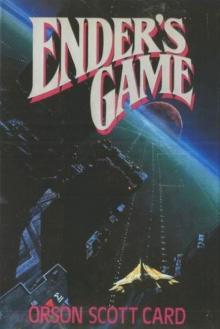 Ender's Game
Ender's Game Pathfinder
Pathfinder Children of the Fleet
Children of the Fleet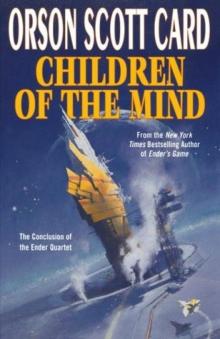 Children of the Mind
Children of the Mind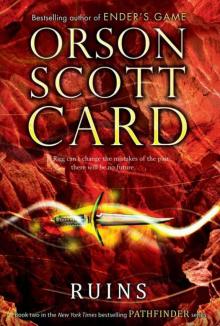 Ruins
Ruins Speaker for the Dead
Speaker for the Dead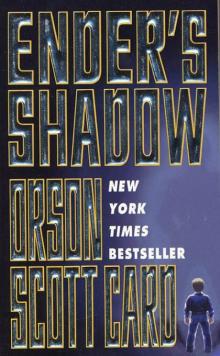 Ender's Shadow
Ender's Shadow Folk of the Fringe
Folk of the Fringe Hart's Hope
Hart's Hope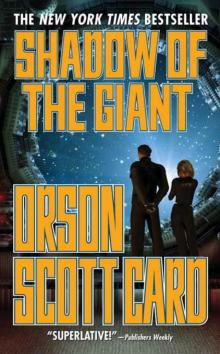 Shadow of the Giant
Shadow of the Giant Empire
Empire Shadow Puppets
Shadow Puppets Earth Afire
Earth Afire First Meetings in Ender's Universe
First Meetings in Ender's Universe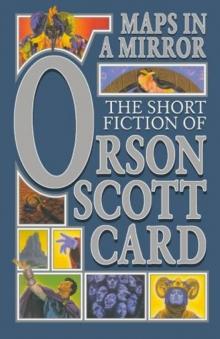 Maps in a Mirror: The Short Fiction of Orson Scott Card
Maps in a Mirror: The Short Fiction of Orson Scott Card Xenocide
Xenocide The Swarm: The Second Formic War
The Swarm: The Second Formic War Saints
Saints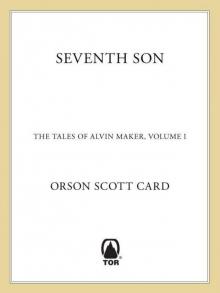 Seventh Son: The Tales of Alvin Maker, Volume I
Seventh Son: The Tales of Alvin Maker, Volume I Zanna's Gift
Zanna's Gift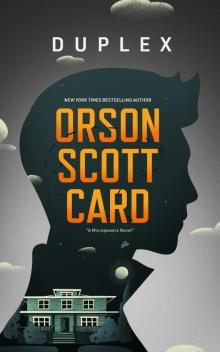 Duplex
Duplex Zanna's Gift- a Life in Christmases
Zanna's Gift- a Life in Christmases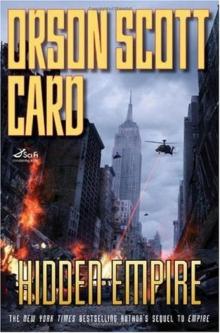 Hidden Empire
Hidden Empire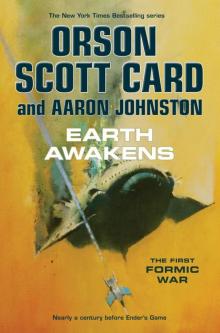 Earth Awakens
Earth Awakens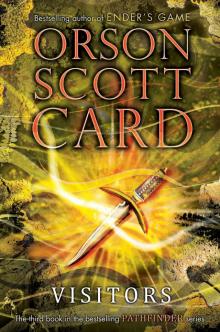 Visitors
Visitors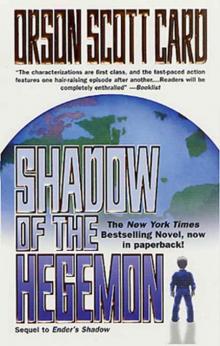 Shadow of the Hegemon
Shadow of the Hegemon Alvin Jorneyman ttoam-4
Alvin Jorneyman ttoam-4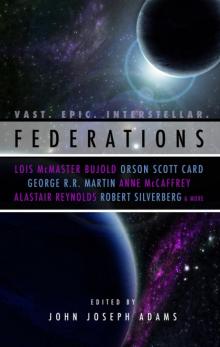 Federations
Federations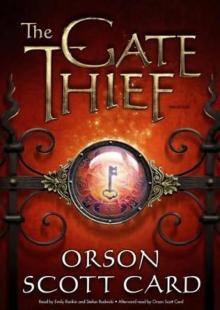 The Gate Thief mm-2
The Gate Thief mm-2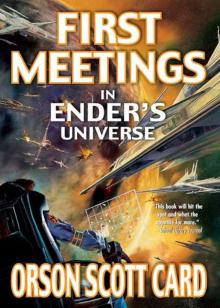 First Meetings
First Meetings Capitol
Capitol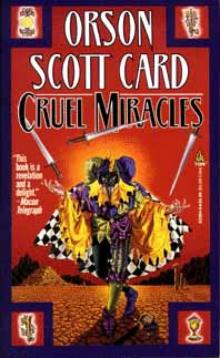 Cruel Miracles
Cruel Miracles Shadows in Flight, enhanced edition
Shadows in Flight, enhanced edition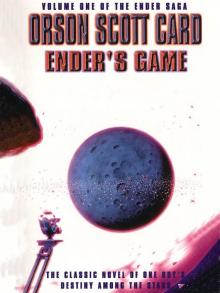 Ender's Game es-1
Ender's Game es-1 Ruins (Pathfinder Trilogy)
Ruins (Pathfinder Trilogy) Ender's Shadow ew-6
Ender's Shadow ew-6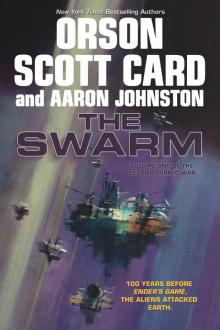 The Swarm
The Swarm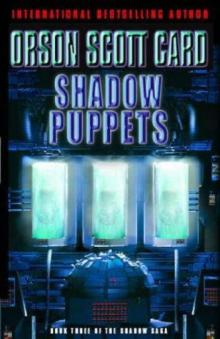 Card, Orson Scott - Ender's Saga 7 - Shadow Puppets
Card, Orson Scott - Ender's Saga 7 - Shadow Puppets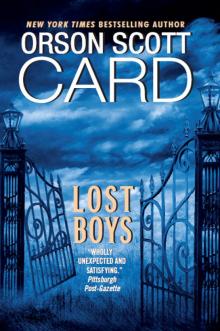 Lost Boys: A Novel
Lost Boys: A Novel Mazer in Prison
Mazer in Prison Treason
Treason Heal Thyself
Heal Thyself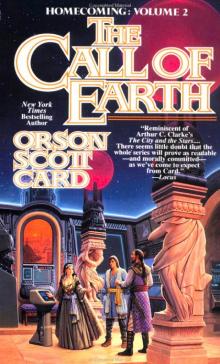 The Call of Earth
The Call of Earth Songmaster
Songmaster Heartfire ttoam-5
Heartfire ttoam-5 Pastwatch
Pastwatch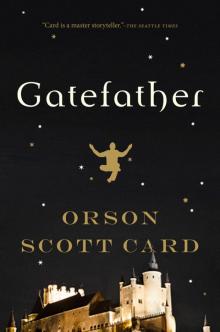 Gatefather
Gatefather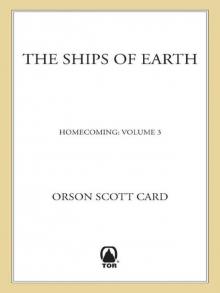 The Ships of Earth: Homecoming: Volume 3
The Ships of Earth: Homecoming: Volume 3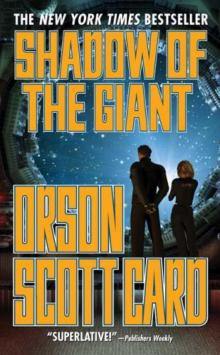 Orson Scott Card - Ender 08 - Shadow of the Giant
Orson Scott Card - Ender 08 - Shadow of the Giant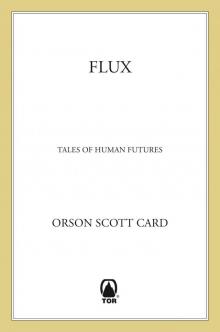 Flux
Flux Speaker for the dead ew-2
Speaker for the dead ew-2 Grinning Man
Grinning Man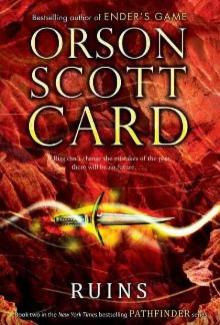 Ruins sw-2
Ruins sw-2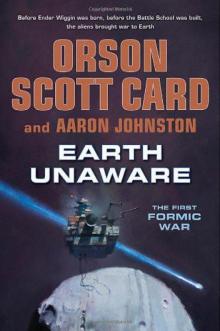 Earth Unaware
Earth Unaware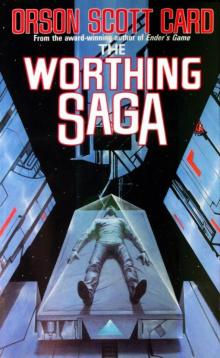 The Worthing Saga
The Worthing Saga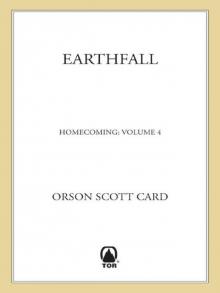 Earthfall (Homecoming)
Earthfall (Homecoming) Card, Orson Scott - Ender's Saga 5 - Ender's Shadow
Card, Orson Scott - Ender's Saga 5 - Ender's Shadow The Abyss
The Abyss Magic Street
Magic Street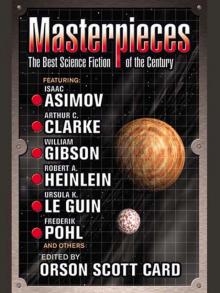 Masterpieces
Masterpieces Prentice Alvin ttoam-3
Prentice Alvin ttoam-3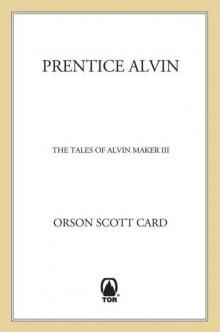 Prentice Alvin: The Tales of Alvin Maker, Volume III
Prentice Alvin: The Tales of Alvin Maker, Volume III Card, Orson Scott - Ender's Saga 3 - Xenocide
Card, Orson Scott - Ender's Saga 3 - Xenocide Homeless in Hell
Homeless in Hell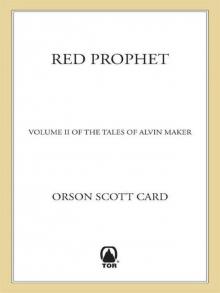 Red Prophet: The Tales of Alvin Maker, Volume II
Red Prophet: The Tales of Alvin Maker, Volume II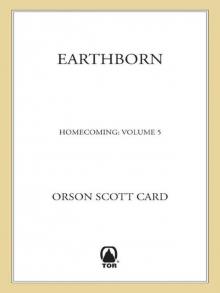 Earthborn (Homecoming)
Earthborn (Homecoming) Hot Sleep
Hot Sleep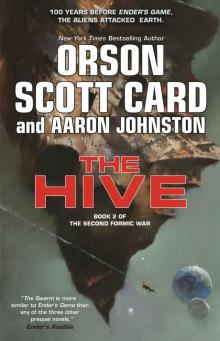 The Hive
The Hive Rachel and Leah (Women of Genesis)
Rachel and Leah (Women of Genesis) Ender's World
Ender's World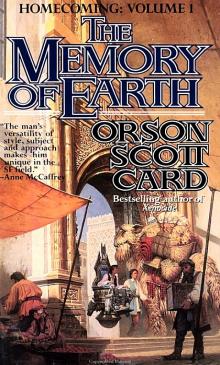 The Memory of Earth
The Memory of Earth Seventh Son ttoam-1
Seventh Son ttoam-1 Wyrms
Wyrms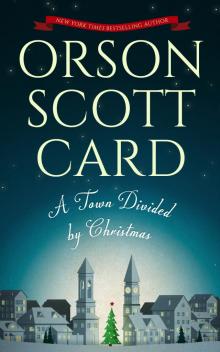 A Town Divided by Christmas
A Town Divided by Christmas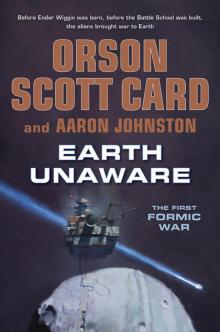 Earth unavare (the first formic war)
Earth unavare (the first formic war)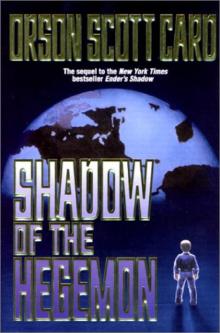 The Shadow of the Hegemon - Orson Scott Card
The Shadow of the Hegemon - Orson Scott Card Earthfall
Earthfall Lost Boys
Lost Boys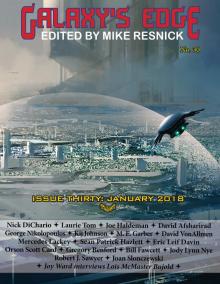 Galaxy's Edge Magazine
Galaxy's Edge Magazine Sarah: Women of Genesis: 1 (Women of Genesis (Forge))
Sarah: Women of Genesis: 1 (Women of Genesis (Forge))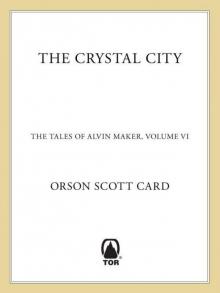 The Crystal City: The Tales of Alvin Maker, Volume VI
The Crystal City: The Tales of Alvin Maker, Volume VI Xenocide ew-4
Xenocide ew-4 Earth Afire (The First Formic War)
Earth Afire (The First Formic War)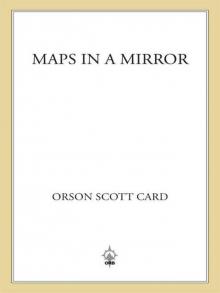 Maps in a Mirror
Maps in a Mirror Pathfinder sw-1
Pathfinder sw-1 Red Prophet ttoam-2
Red Prophet ttoam-2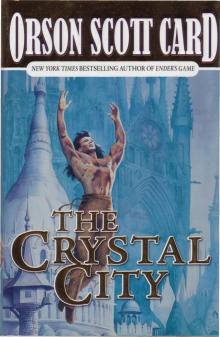 THE CRYSTAL CITY
THE CRYSTAL CITY 27 Short Stories
27 Short Stories Heartfire: The Tales of Alvin Maker, Volume V
Heartfire: The Tales of Alvin Maker, Volume V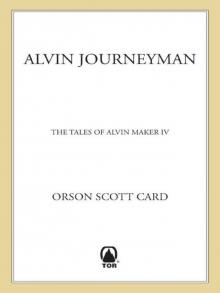 Alvin Journeyman: The Tales of Alvin Maker, Volume IV
Alvin Journeyman: The Tales of Alvin Maker, Volume IV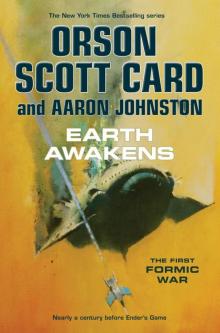 Earth Awakens (The First Formic War)
Earth Awakens (The First Formic War)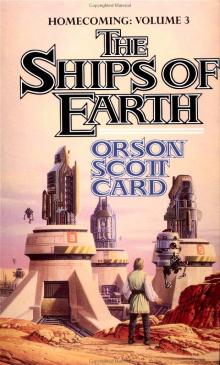 THE SHIPS OF EARTH
THE SHIPS OF EARTH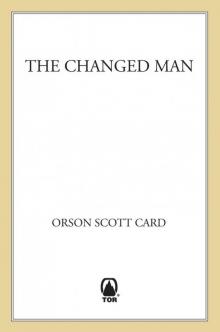 The Changed Man
The Changed Man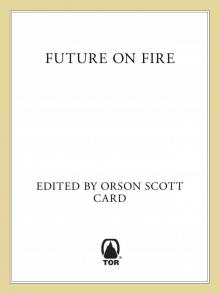 Future on Fire
Future on Fire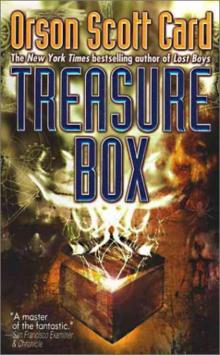 Treasure Box
Treasure Box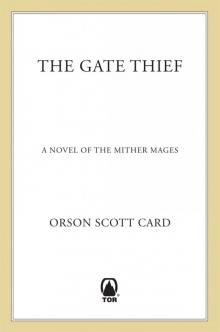 The Gate Thief
The Gate Thief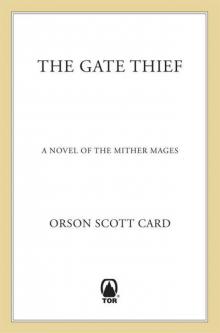 The Gate Thief (Mither Mages)
The Gate Thief (Mither Mages) First Meetings In the Enderverse
First Meetings In the Enderverse Earthborn
Earthborn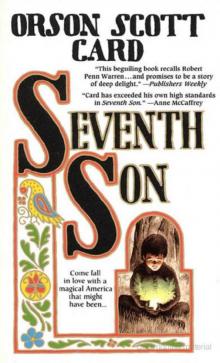 Seventh Son
Seventh Son Pastwatch: The Redemption Of Christopher Columbus
Pastwatch: The Redemption Of Christopher Columbus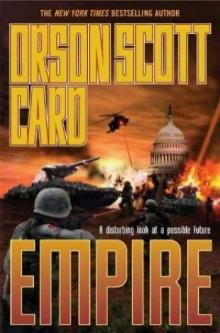 Empire e-1
Empire e-1 Keeper of Dreams
Keeper of Dreams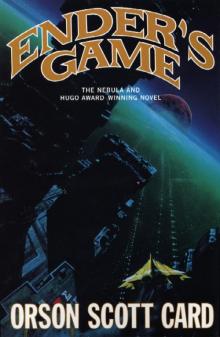 Card, Orson Scott - Ender's Saga 1 - Ender's Game
Card, Orson Scott - Ender's Saga 1 - Ender's Game ALVIN JOURNEYMAN
ALVIN JOURNEYMAN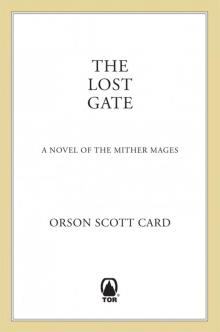 The Lost Gate
The Lost Gate Feed The Baby Of Love
Feed The Baby Of Love Hot Sleep: The Worthing Chronicle
Hot Sleep: The Worthing Chronicle